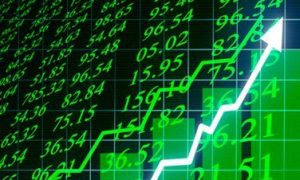Domestic Macroeconomy
This week, we examined the rebased Gross Domestic Products (GDP) report published by the National Bureau of Statistics (NBS) and the outcome of the just concluded Monetary Policy Committee (MPC) meeting of the Central Bank of Nigeria (CBN).
Starting with the former, the NBS published the highly anticipated rebased GDP figures for Q1:2025, with new base year of 2019 as against previously adopted base period of 2010. The change in base year period was to ensure that national accounts reflect the current structure and realities of the economy. The exercise is in line with international best practices (ideally, rebasing should be done every 5 or 10 years), as Nigeria last rebasing exercise took place in 2014 with 2010 set as base period.
Additionally, the NBS during its January 2025 stakeholders’ engagement session on the planned rebasing highlighted that eight new activity sectors – Digital Economy, Creative Industries, activities of Pension Fund Administrators, Marine and Blue Economy, Modular Refineries, Social Insurance Schemes, Domestic Households as employers, and a broader scope of Informal & underground economic activities previously underreported or ignored in the GDP computation would now be properly captured.
The NBS argued that the choice of 2019 was strategic, as it was the last stable year before the pandemic disruption by the COVID-19 pandemic in 2020. Based on the outcome of the rebasing exercise, Nigeria’s 2024 nominal GDP jumped to ₦372.8tn (equivalent to $251.0bn using 2024 average exchange rate of ₦1,484.99/$) from ₦277.5tn ($180.8bn) under the old base year. Furthermore, the rebased GDP revealed notable adjustments to GDP performance between 2020 and 2024 in general. Pre-rebasing, annual real GDP growth rate for 2020-2024 averaged around 2.1%, with some spikes particularly in 2021 (+3.4%) attributed to oil price recovery and post-COVID economic rebound.
However, post-rebasing, the average growth rate over the same period moderated to 1.0%. Noteworthy, the stronger than previously reported negative impact of the pandemic on the economy in 2020 (rebased GDP data showed that the economic contracted 6.9% in 2020 vs 1.9% captured in the old methodology), and the lethargic recovery from 2021 through 2023 implies that the economy did not snap out of the pandemic shock until after three years. Meanwhile, the rebased GDP data puts Q1:2025 growth at 3.1% y/y vs 2.3% in corresponding period of 2024. This performance was supported by growth in both the non-oil (+3.2% y/y) and the oil (+1.9% y/y) segments of the economy.
From a sectoral prism, services sector growth remained resilient in Q1:2025, up 4.3% y/y from 4.1% in Q1:2024 but trailed the 4.8% growth recorded in Q4:2024. The sturdy services sector growth was largely driven by impressive performances in Financial & Insurance (+15.0%), Transportation (+14.1%), and Information & Communication Technology (+7.4%). In contrast, growth in the Trade sub-sector weakened to 1.8% y/y from 2.3% in the corresponding period of 2024.
On a quarterly basis, the services sector growth rate slowed to 4.3%, reflecting a seasonal dip in demand following the Q4:2024 festive period. The industrial sector recorded a y/y growth of 3.4% in Q1:2025, accelerating from 2.5% in each of Q1 and Q4:2024. This was supported by Manufacturing (+1.7%), Food, Beverage & Tobacco (+3.5%), and Oil Refining (+11.5%). We suspect that the capturing of activities of modular and Dangote refineries in the oil refining segment boosted the industrial sector performance. The agriculture sector recorded a dismal 0.1% growth in Q1:2025, despite growth in crop production (+3.7%), offsetting the sharp 16.7% contraction in the livestock segment.
In terms of the implication of the GDP rebasing exercise on fiscal status, the nation’s debt-to-GDP ratio for 2024 improved to 40.0% from 53.8% under the previous base year. By annualising the Q1:2025 GDP size (₦376.4tn), debt to GDP ratio is now 39.7%, below the prudential threshold of 40.0% set by the Debt Management Office (DMO) in its sustainable debt framework.
This development has given the FG fresh headroom to take some more borrowing to bridge fiscal shortfalls without bridging prudential ceiling. Likewise, the tax revenue to GDP rate which previously was estimated at 13.5% has now dropped to 10.0%. We see this providing the necessary impetus for aggressive implementation of the newly signed Tax Reform Act 2025 when it becomes operational in 2026.
Away from the implications of the rebased GDP, we flagged the lack of clarity in the manner in which the NBS added the new eight activity sectors identified during its sensitisation in January 2025 in the rebased figure. For perspective, we would have expected the NBS to explicitly state the size of each of the new activities’ standalone, and how they impact on the segment where they are added. For instance, it would have been more insightful to know the exact size of informal and illegal sub-activities which the NBS hinted it now captured in the GDP computation to help shape policy recommendations for informal activities.
Overall, we retain our GDP growth forecast of 3.3% for 2025, anchored on sustained resilience in the services sector. We also expect a moderate recovery in the agricultural sector, supported by the onset of the harvest season. Nevertheless, several downside risks could constrain overall performance, including persistent structural issues such as insecurity in key agrarian regions, elevated inflation eroding consumer spending, and tight monetary conditions restricting credit availability.
Shifting gears, in line with our projections, the MPC at the at end of its 301st policy meeting opted to keep all key monetary policy parameters unchanged – MPR held steady at 27.5%, asymmetric corridor retained at +500/-100 bps around the MPR, Cash Reserve Ratio held at 50.0% for commercial banks and 16.0% for merchant banks, and Liquidity Ratio left at 30.0%. According to Dr. Yemi Cardoso, the decision to maintain the current stance was driven by the need to sustain ongoing disinflation efforts as risk factors remains tilted to the upside.
The committee assessed recent economic developments, focusing on the volatility in the external macroeconomic environment, domestic inflation trend, exchange rate dynamics, and the modest growth in Q1. Looking ahead, we expect the committee’s decision to remain guided by broader macroeconomic developments in the remaining months of the year.
Domestic Equities Market: Earnings Spark Broad-Based Rally… ASI up 2.2% w/w
This week, the first wave of positive corporate earnings releases underpinned the bourse’s bullish performance as the NGX-ASI gained 2.2% w/w to settle at 134,452.93 points. Consequently, YTD return improved to 30.6% (previously 27.8%), while market capitalisation climbed 2.2% w/w to ₦85.1tn. Meanwhile, activity level declined as average volume and value traded fell 86.4% and 85.7% to 736.4m units and ₦22.4bn, respectively. The top traded stocks by volume were FCMB (1.4bn units), ACCESSCORP (422.7m units), and JAPAULGOLD (201.8m units), while FCMB (₦13.4bn), ACCESSCORP (₦11.6bn), and GTCO (₦11.2bn) were the top traded by value.
Across sectors under our purview, performance was broadly positive as all six sectors gained. Topping the gainers, the Industrial Goods and Insurance indices advanced 4.7% and 3.1% w/w, respectively, owing to buying interest in WAPCO (+9.7%), BUACEMENT (+9.4%), SOVRENINS (+16.3%) and CORNERST (+12.3%). Following, the Consumer Goods and Banking indices rose 2.8% and 1.8% w/w, respectively, as DANGSUGAR (+14.3%), GUINNESS (+10.0%), WEMABANK (+23.6%) and FIRSTHOLDCO (+6.6%) recorded gains. Similarly, price appreciation in OANDO (+18.9%), LEGENDINT (+10.1%) and CWG (+7.2%) pushed the Oil & Gas and AFR-ICT indices higher by 0.9% and 2bps, respectively.
Investor sentiment as determined by market breadth strengthened to 0.4x (previously -0.12x) as 60 stocks gained, 43 lost, and 40 closed flat. The top gainers for the week were TIP (+60.8%), ACADEMY (+33.0%) and ENAMELWA (+32.7%) while NSLTECH (-24.0%), OMATEK (-23.9%), and MEYER (-21.4%) were the top losers. We expect the bullish sentiment to extend into the coming week supported by the positive investor sentiment and the anticipation of strong Q2 earnings from key players, following encouraging early earnings results.
Afrinvest



























